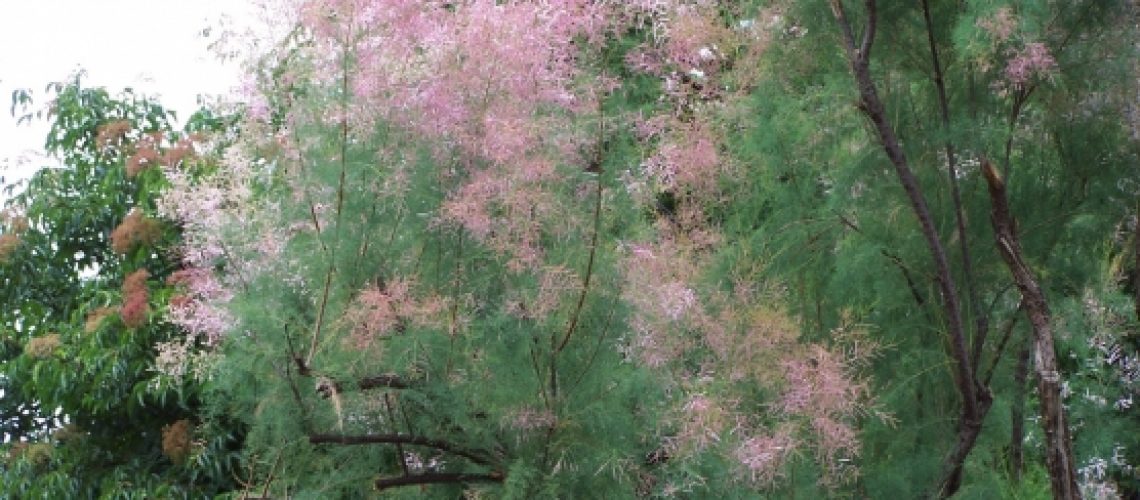Tamarix is perhaps one of our better know invasive species. It is found widely throughout the Southwest. The description below comes from Wikipedia, where you can read more in depth on the subject.
They are evergreen or deciduous shrubs or trees growing to 1–18 m in height and forming dense thickets. The largest, Tamarix aphylla, is an evergreen tree that can grow to 18 m tall. They usually grow on saline soils, tolerating up to 15,000 ppm soluble salt and can also tolerate alkali conditions.
Tamarisks are characterized by slender branches and grey-green foliage. The bark of young branches is smooth and reddish-brown. As the plants age, the bark becomes bluish-purple, ridged, and furrowed.
The leaves are scale-like, 1–2 mm long, and overlap each other along the stem. They are often encrusted with salt secretions.
The pink to white flowers appear in dense masses on 5–10 cm long spikes at branch tips from March to September, though some species (e.g. T. aphylla) tend to flower during the winter.
The tamarisk was introduced to the United States as an ornamental shrub, a windbreak, and a shade tree in the early 19th century. In the 1930’s, during the Great Depression, tree-planting was used as a tool to fight soil erosion on the Great Plains and the trees were planted by the millions in the Great Plains Shelterbelt.
It is commonly believed that Tamarix disrupts the structure and stability of North American native plant communities and degrades native wildlife habitat by outcompeting and replacing native plant species, salinizing soils, monopolizing limited sources of moisture, and increasing the frequency, intensity, and effect of fires and floods. While it has been shown that individual plants may not consume larger quantities of water than native species, it has also been shown that large dense stands of tamarisk do consume more water than equivalent stands of native cottonwoods. There is an active and ongoing debate as to when the tamarisk can out-compete native plants, and if it is actively displacing native plants or it just taking advantage of disturbance by removal of natives by humans and changes in flood regimes. Research on competition between tamarisk seedlings and co-occurring native trees has found that the seedlings are not competitive over a range of environments, however, stands of mature trees effectively prevent native species establishment in the understory due to low light, elevated salinity, and possibly changes to the soil biota. Thus, anthropogenic activities that preferentially favor tamarisk (such as changes to flooding regimes) are associated with infestation. To date, Tamarix has taken over large sections of riparian ecosystems in the western United States that were once home to native cottonwoods and willows and are projected by some to spread well beyond the current range.

